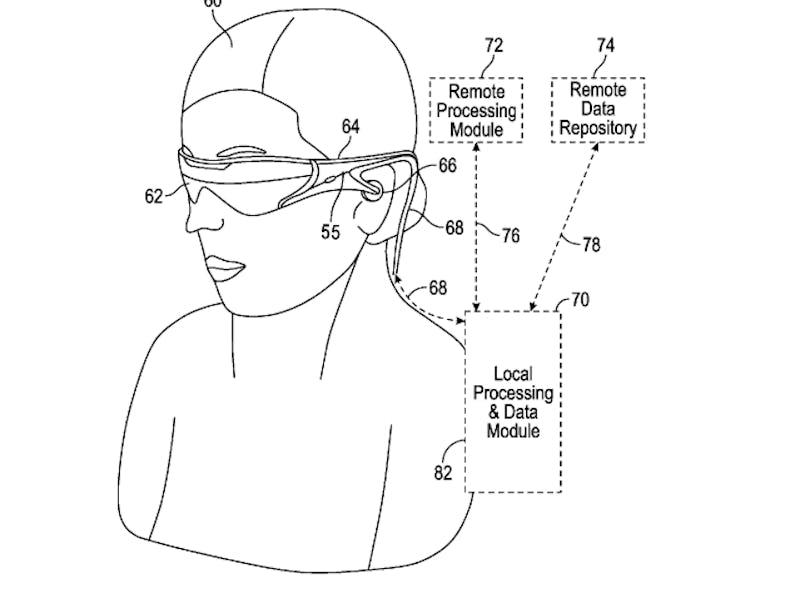Magic Leap Wants to Use Augmented Reality to Treat Color Blindness
This is how we think it works.

A patent application for treating colorblindness with augmented reality, filed by the secretive startup company MagicLeap, was approved on Thursday, illustrating a new use for the trendy but nascent technology.
The patent shows an augmented reality device that can be used to diagnose and treat eye issues, specifically color blindness.
Of the 160,000 words in the patent, the most vital idea is near the top, the first of eighteen claims (emphasis is ours):
A wearable augmented reality device configured to be used by a wearer, said device comprising: an augmented reality head-mounted ophthalmic system comprising a wearable augmented reality display platform, said augmented reality head-mounted ophthalmic system configured to pass said light from the world into an eye of a wearer wearing the head-mounted system, said wearable augmented reality display platform comprising a display comprising at least one light source, wherein said wearable augmented reality device is configured to selectively modify said light from the world based on a color detection deficiency of the wearer.
Treating color blindness with technology is an emerging field. There are the EnChroma glasses that work pretty well if you’re green-red colorblind, but for other types of colorblindness, there isn’t much you can do to see colors. It looks like MagicLeap is trying to use its augmented reality headsets to fill that gap, along with putting your eye doctor out of business.
This overlap of red and green light is what the EnChroma glasses correct.
Color blindness is caused by a problem with the cones in your eyes that discriminate color. Instead of differentiating the wavelengths of light as specific colors, the cones register them as all about the same. It’s like what happens when you mix too many colors of paint together and just make brown every time — but instead, the cones in your eyes are doing this to specific colors of light.
Now EnChroma glasses work because they create more distinction between red and green wavelengths of light, so when they reach the cones of your eye, the colors are separated and aren’t mixed together.
What we can tell from MagicLeap’s patent is that it is taking this idea to the next level. There are sensors that allow the device to figure out what colors a person can’t see. Then the device amplifies the wavelengths of light so it can apply a filter so none of the colors overlap.
MagicLeap also has lines in the patent for diagnosing other eye conditions like myopia, hyperopia, and astigmatism (to name a few) and then adjusting for that in the augmented reality device. There also appears to be a user menu where you can adjust all these different vision settings manually.
It is still unclear if this device is anywhere near completion, or even if it works. MagicLeap is notoriously tight-lipped, and despite raising $1.4 billion for its augmented reality glasses, it hasn’t released even a beta-version of the tech to investors, and it faked its recent AR demo video.
Perhaps unsurprisingly, MagicLeap didn’t respond to Inverse’s request for a comment on this patent. But if the company can fulfill this patent, their AR headsets will be pretty cool.